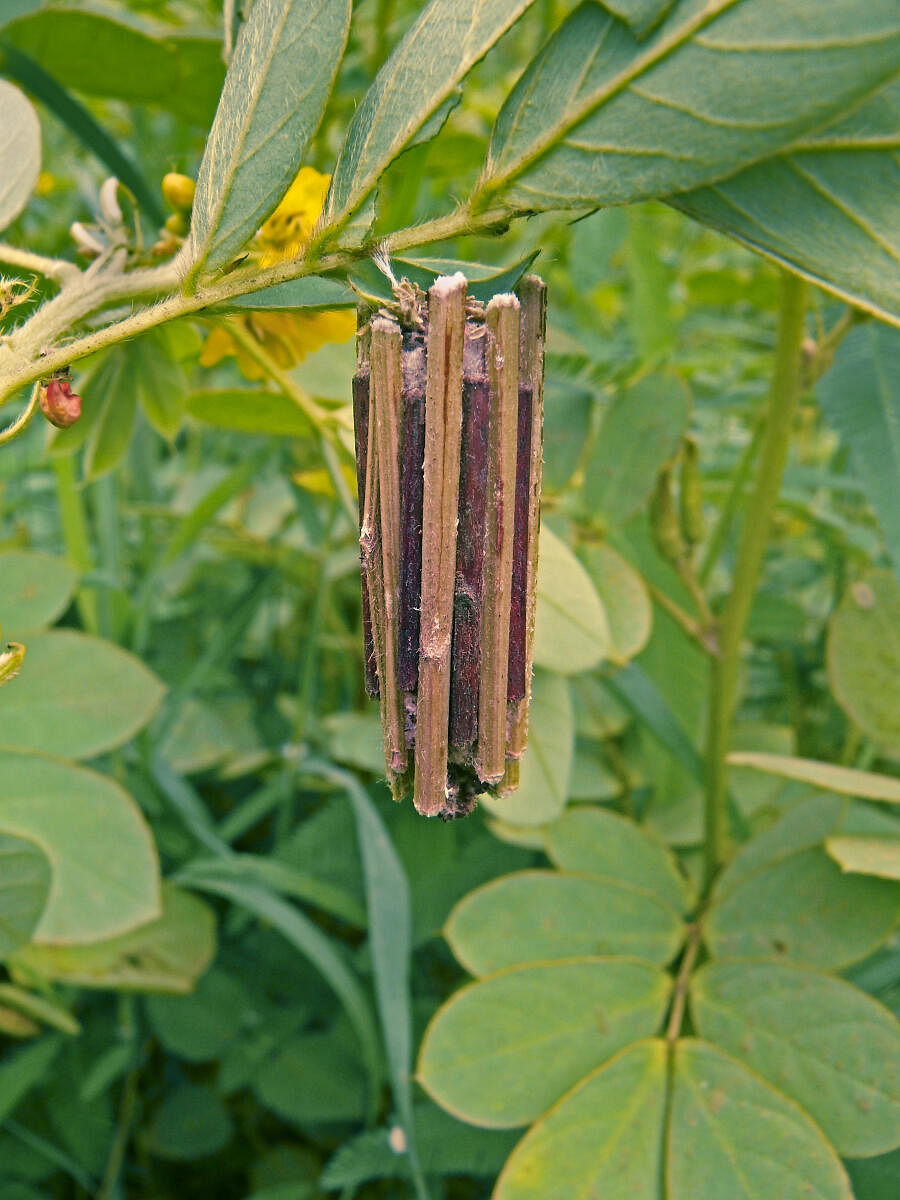
We have five outdoor benches dotting Navilu Kaadu — a bench each beneath two tamarind trees that bookend our land at the front and rear, a third bench infusing oodles of charm to our tiny sandalwood and neem grove by the pathway, the fourth near the outdoor shower and a fifth by our bedroom window.
We call this motley bunch of benches, ‘The Enchanted Quintet.’ They offer ringside seats to the wild arena around us.
The bench by the sandalwood tree is a beloved spot. We spend plenty of time here watching mellow sunrises and blazing sunsets. Sitting here, we spy the skulking form of our resident spectacled cobra as it slithers across the pathway between the coconut grove and our patch of grassland.
This bench is Zoey’s slumber zone on lazy afternoons, while one of her bipedal siblings lounges with a book in the hammock slung between the neem and sandalwood trees. It is where I go seeking solitude. It is also where I pretend to oversee work around the farm, while I daydream or attempt to decipher random cloud patterns!
One afternoon, just as I nearly fell off the bench from a heat-induced stupor, I spotted a clump of dust scurrying across the bench. Closer inspection revealed a minuscule temple tower, a gopura moving on its own volition. The thing had precision-sawed twig bits, stacked in a twirly, tapering tower, barely a quarter of an inch high.
I was gobsmacked by its symmetry and beauty. The tower leaned back at intervals, revealing the probing head of the mysterious creature within.
My bench mate was a bagworm moth caterpillar.
In later days on the farm, we spotted two more variants of the said dwelling — one was a tube made of soil grains and the other resembled a bundle of twigs. In our Bengaluru home, these up-country bagworms’ city kin build rather prosaic grey-brown spindle-like cases in ceiling corners.
Bagworm moths are plant parasites and belong to the Psychidae family within Lepidoptera, an order that includes moths and butterflies.
Larvae of the Psychidae family typically build cases lined with silk on the inside and armoured on the outside with soil or plant matter, hence the name ‘bagworm.’ They are among the natural world’s littlest architects that conjure up unusual lodgings from stuff we humans consider detritus. The finished structures are a study in masterful disguise and utilitarian design.
Bagworm moth caterpillars move about ensconced inside these reinforced cocoons, adding extensions as they feed on the host plant and gain in size. They eventually truss the cocoon to the plant or a stationary object, with sturdy silk yarn when they enter the pupal phase.
On metamorphosis, winged adult males emerge from their cocoons. Adult females seldom leave theirs. Females lack wings or fully-formed eyes and have vestigial legs and antennae.
Even so, Lady Bagworm isn’t lacking in allure. She releases impossibly irresistible pheromones, launching a charm offensive that draws a lovesick male to her doorstep. The pair then mate. The female lays between 500 and 1000 eggs in her bag and perishes soon after. The male too dies outside the bag after mating. In certain species of bagworms, the larvae emerge from the dead mother rather than hatch from eggs.
When the brood leaves the mother’s bag, each larva suspends itself from a silken strand of its own secretion, and merrily rides the wind till it finds a suitable host plant, in a behaviour called ‘ballooning’ or ‘kiting.’
Her bag symbolises the female bagworm’s universe from when she crafts it as a little grub, until after her demise when her progenies emerge. The bag’s warm recesses form a cosy cocoon while she grows to maturity. In adulthood, her bag transforms into a conception chamber as she mates and lays eggs. The bag then becomes her sarcophagus as she passes on, surrounded by her eggs. Soon enough, her coffin transitions to a birthing chamber when the larvae hatch around the interred mother, and the bag thrums with life once more.
A new generation of baby bagworms full of bag-making moxie, go kiting into the world on gossamer threads to cobble up their own bags.
Rooting For Nature is a monthly column on an off-kilter urban family’s trysts with nature on a natural farm.
The author chipped away at a software marketing career before shifting gears to independent consulting and natural farming. She posts as @ramyacoushik on Instagram. Reach her at bluejaydiaries@gmail.com